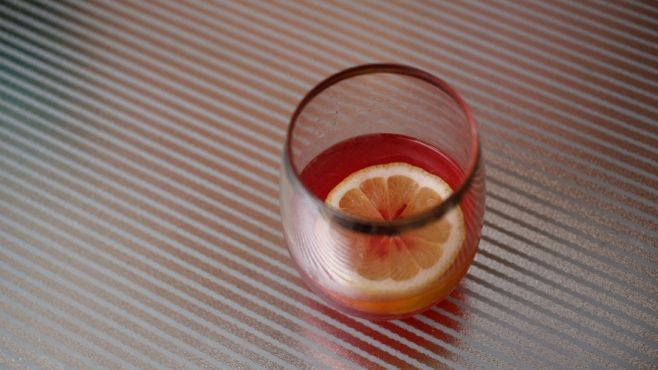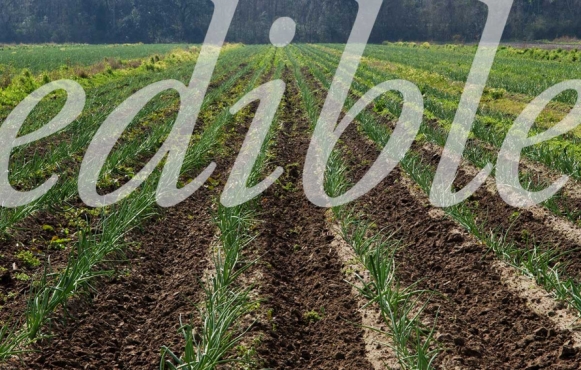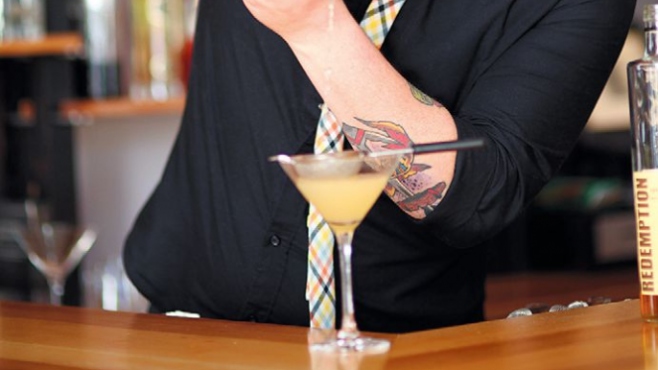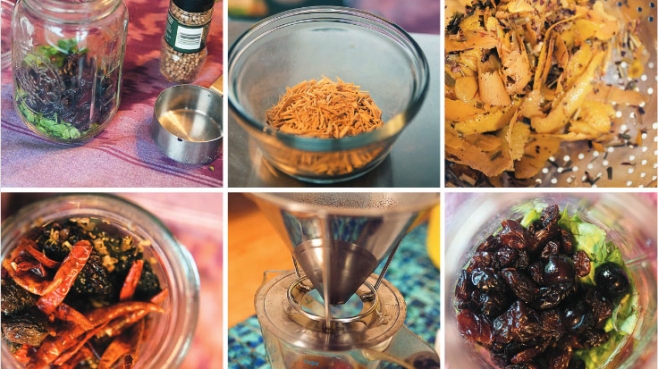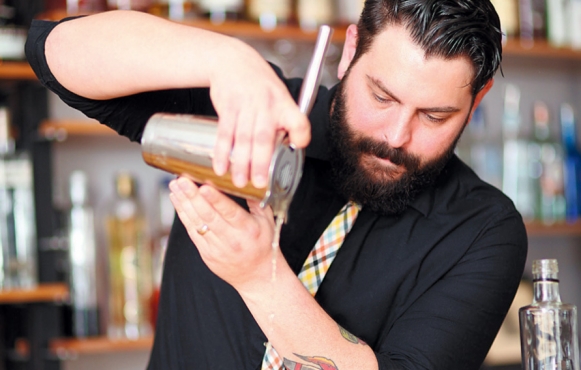Shrubs and tonics popping up in nod to old-style cocktails

In the world of cocktails, the quest for something new always seems to be sliding across the bar. But sometimes if you want something new, you have to go back. Way back. That’s the case with shrubs (not a garden decoration, but a drink) and, lately, tonics.
The rub on shrubs
According to Michael Dietsch’s excellent Shrubs: An Old-Fashioned Drink for Modern Times, (W.W. Norton, 2014), shrubs likely originated in Turkey and Persia. The name comes from the Arabic word sharāb, meaning drink (the word also is the root for sherbet, sorbet and syrup). The term is pretty broad now and encompasses drinks made with fruit and vinegar, sugar, water and any number of other ingredients, including brandy, rum or some other spirit. What results is a versatile drink and mixer, whether it’s alcoholic or not.
“We use them at the bar a lot in tons of different cocktails,” says Danni Smith, general manager (and bartender) at The Exchange Whiskey Bar in South Bend, IN. “With a shrub, you get the vinegar—sweet and savory, so they’re really fun to use.”
As Dietsch tells it, shrubs at their most basic are made by steeping fruit (and even vegetables) in vinegar as a way of preserving produce. In addition to its preservative qualities, vinegar, he writes, is a thirst quencher that also happens to contain calories and even has a bit of nutritional value in the form of vitamin C (shrubs were popular on naval vessels to combat scurvy).
Smith says there are two basic ways to make shrubs: the hot method and the cold method.
With the hot method, you make a simple syrup (50% water, 50% sugar) and stir over heat until the sugar dissolves. Add your fruit of choice and stir until the fruit is integrated. Then strain and add vinegar to taste.
The cold process takes longer, but the fruit flavor is fresher, Smith says, because unlike the hot method, you’re not “baking” the fruit. The resulting shrub tends to be more interesting flavor-wise, she says.
A basic recipe is one cup each of fruit, sugar and vinegar. Macerate the fruit with the sugar in the refrigerator for two days; strain well, add the vinegar and whisk until any remaining sugar is fully dissolved.
“Each option is good,” Smith says. “I like the hot method in fall for a deeper, richer shrub, and cold shrubs in the summer.”
Smith adds that if you’re under a time crunch and need to impress your friends, the hot method is the way to go.
The menu at the Exchange has included a blueberry lavender shrub (which mixes well into a Lemon Drop) and an orange clove shrub that pairs well with rum. A blood orange shrub pairs well with Champagne and elderflower. But the combinations don’t end there.
“When you’re making shrubs you can experiment,” Smith says, rattling off a number of combinations and flavorings, such as strawberry mint, blackberry basil, cinnamon, vanilla and even peppercorns.
A tonic for your drinking woes
Tonic: The other half of one of the most storied drinks in history. It’s great mixed with gin and lime juice. Sometimes not so good on its own. Great for birthday parties or if you want a rave vibe in your house—it glows when you shine a black light through it!
Tonic tends to be something that people only drink because they have to, because the recipe calls for it. No longer!
Tonic started out as just what the name implies: something medicinal to cure what ails you. The tonic we all know contains quinine, which is what makes it glow under ultraviolet light. It was used to keep malaria at bay. The quinine powder, produced from the bark of a cinchona tree, made the water so bitter that sugar and flavorings were added to make it more palatable (a spoonful of sugar helps the medicine go down, indeed).
Lately, some producers have been making—for lack of a better term— artisanal tonics, going back to the older style of producing them. These are sold as either carbonated tonics or tonic syrup, which you mix with soda water before adding to a drink.
“A lot of these newer companies are going to the source,” Smith says, and get their cinchona bark from South America, along with various herbs and spices for flavor. One company—Fever Tree, whose tonics you can buy in stores in Michiana—makes some really interesting flavors beyond basic tonic, including an elderflower that Smith says pairs very well with vodka, gin, light rum, citrus juices or even on its own with ice.
Many brands are easily purchased online as well. Other brands you can find in local groceries include Q or Whole Foods’ 365 Tonic Water.
Smith says these tonics are a great way to up your gin and tonic game (she’s especially fond of the gin and tonic styles in Spain, which include all kinds of additions, from fresh fruit to cardamom pods). If you can find or order some of the tonic syrups, that makes it easier to experiment, since you can keep different varieties around longer without worrying about them going flat.
Try our versatile raspberry shrub recipe, which can be used in these drinks on the last warm fall evenings out on the patio or as a celebratory drink at holiday gatherings.


